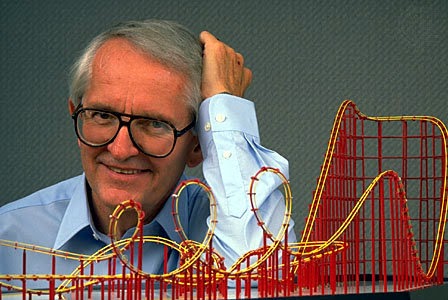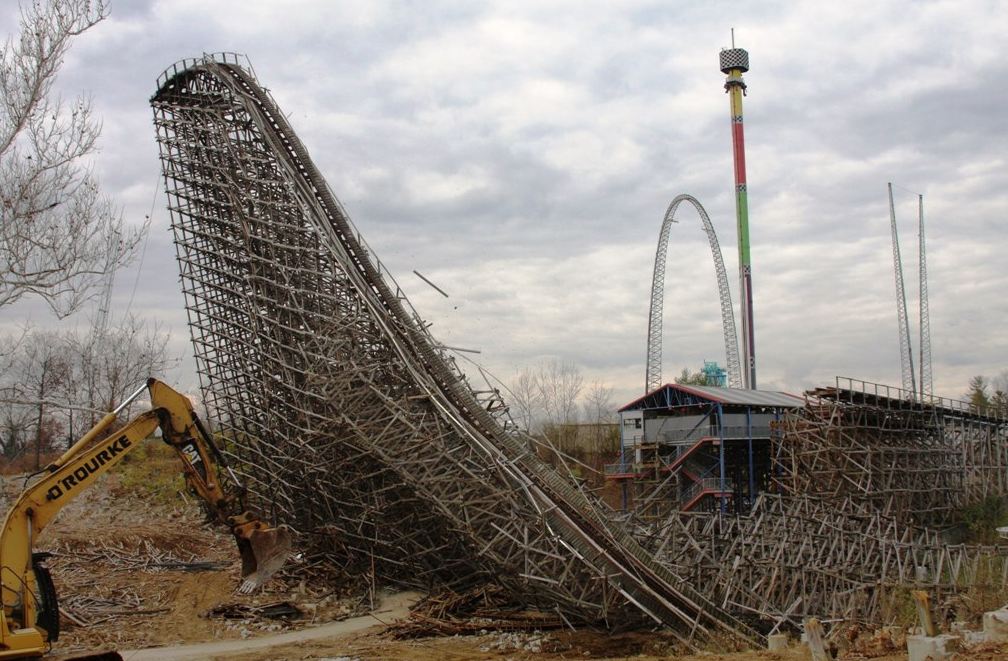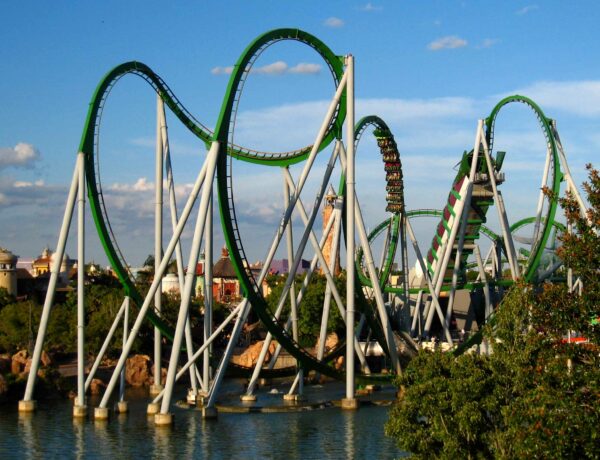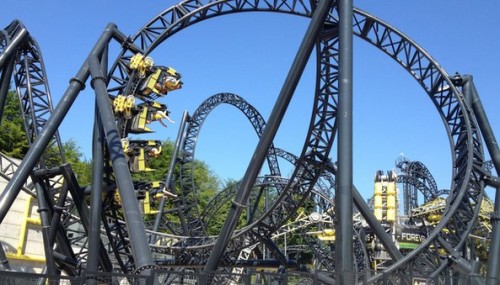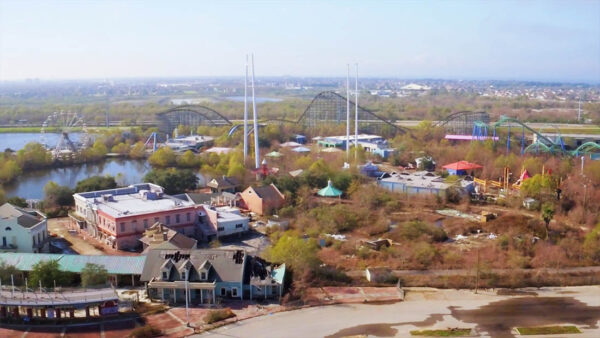Moderately interesting article about the safety and regulation of theme park rides.
Source: http://www.norwalkreflector.com/article/4236536
Amusement parks rarely face fines for ride accidents
Cedar Point officials and Ohio inspectors are completing a review of Shoot the Rapids, which closed in July after accident.
MCT Regional News
Mar 3, 2014
A Cedar Point amusement park visitor placed a frantic phone call to police — the woman feared riders, who were just thrown off the park’s water ride Shoot the Rapids, were injured.
She was right.
The ride’s log flume had come off the track, rolled the car back into the water and sent riders flying out of their seats, injuring seven.
Such occurrences are rare at Ohio’s major amusement parks. More than 6 million people visit Ohio attractions Cedar Point and Kings Island a year. Since 2010, Cedar Point reported seven accidents that resulted in a rider being admitted to a hospital, according to the state’s ride safety agency. Kings Island reported no such accidents during the same period.
“Your chances of being in a wreck or having a problem are greater driving down Interstate 75 than riding a roller coaster,” said Dennis Speigel, president of International Theme Park Services Inc., a Cincinnati-based industry consultant.
But when accidents or malfunctions do happen, it’s also rare for state inspectors to punish the roller coaster operator.
This newspaper analyzed the state’s investigation reports showing 10 accidents at four of Ohio’s major roller coaster and water amusement parks since 2010. Accident reports were reviewed for the state’s two biggest fixed-amusement park operations, Mason’s Kings Island and Sandusky’s Cedar Point, as well as two other popular, local destinations: The Beach Waterpark in Mason and Coney Island in Cincinnati.
Not once did the state issue violations or fines as a result of any of these accidents. Inspectors did, however, issue three separate violations against these parks for operational failures such as water quality during the three years analyzed.
Amusement park safety isn’t federally regulated and several states have no safety laws that regulate coaster safety. That Ohio has any program in place at all means that it has a more rigorous inspection process than many other states across the U.S.
Still, Ohio doesn’t require more common minor injuries, such as headaches or dizziness, to be reported or tracked like amusement park mecca California does.
Federal oversight would add an unnecessary layer of bureaucracy, said Speigel, a former manager of Kings Island and Coney Island.
“The industry as a whole is very self-policing,” he said. “If we’re not safe, people won’t come back.”
“Every square inch is looked at”
The Ohio Department of Agriculture Division of Amusement Ride Safety licenses nearly 4,000 attractions and rides — including inflatable bounce houses, go-kart tracks, rides at the state’s 94 agriculture fairs, and amusement parks every year. The office runs on a $1.175 million annual budget, which is self-sustained by licensing fees and fines, the state’s chief ride inspector, Mike Vartorella, said.
During this time of year, the office’s seven ride inspectors are spending hours examining the state’s 300 fixed-location amusement parks. Inspectors, for example, will spend five weeks examining each of Cedar Point’s 72 rides this year.
“(We aren’t) just going to walk up to this thing and say, ‘oh man, this looks good, let’s go,’” Vartorella said. “Every square inch is looked at, trust me.”
Throughout the year, Ohio inspectors conduct planned and random inspections.
And, when someone at the park is injured so badly that they’re admitted into a hospital, it’s the state investigator’s job to travel to the park, investigate and inspect the ride. The state, however, only has the authority to investigate accidents that involve an injured rider who either gets admitted or stays overnight at a hospital.
Sometimes that rule means the state won’t inspect the most serious amusement park mishaps— like what happened on Shoot the Rapids last summer. None of the riders injured in that accident were admitted to a hospital. The ride was immediately shutdown by Cedar Point, but the state never opened an accident investigation or issued a citation over the event.
Shoot the Rapids malfunctioned, as the chain pulling the ride came off the track and the ride was off the track too high to catch before sliding back down into the water, Vartorella said.
Cedar Point officials and Ohio inspectors are completing a review of Shoot the Rapids, Bryan Edwards, Cedar Point spokesman, said in an email. Plans are to reopen Shoot the Rapids this season, Edwards said. The ride has been closed since last July’s mishap.
“We go to great lengths to ensure the safety of everyone here at the park,” Edwards said. “Cedar Point experts conduct a comprehensive set of maintenance, safety and operations inspections every operating day…”
Kings Island was never cited, either, for problems involving the Son of Beast wooden coaster.
One woman — who reported feeling like her ‘brain was shaking’ on the ride — was found to have a broken blood vessel in her brain following her ride on the Son of Beast in 2009.
Years earlier, in 2006, the same ride was under fire after more than 20 people were injured.
A state investigator during a jury trial in 2009 testified the Son of Beast had ongoing issues. The investigator claimed the park used “Band-Aid style” fixes for structural problems with the ride. One of the injured riders was awarded $76,000 in compensation for pain and suffering damages.
Kings Island shuttered the ride and this year unveils a new ride in its place, Banshee. Ohio never ordered Son of Beast to permanently close.
“The main thing for that ride is that it just wasn’t fun and enjoyable for the average guest anymore,” Don Helbig, spokesman for Kings Island said.
In 2010 at Coney Island, a woman’s leg became lodged in between the deck and the ride Trabant. The rider said the incident caused significant bruising and she lost feeling in her leg as a result, according to a state-filed accident report. Coney Island agreed to a private, undisclosed settlement over that accident, but wasn’t cited by the state.
Trabant has closed and is being replaced by a new ride this year, park management said.
“In regards to the Trabant, we have a confidentiality clause attached to the settlement so unfortunately I can’t speak to the details of the incident,” Coney Island Amusement Park General Manager Mike Howard said by email. “Safety is of great importance to Coney and it has been throughout our nearly 130 year history.”
‘If we’re not safe…’
Parks are required to shut down rides automatically when a child breaks a bone or a rider dies of heart attack mid-air.
But park operators and state inspectors argue there’s enough incentive for parks to close problematic roller coasters, like Son of Beast, regardless of state regulation.
“We want people here… have a great day, the best day, not to be beat up or whatever the case may be in a ride,” said Tom Dillingham, manager of Kings Island’s rides mechanical and automotive maintenance.
Amusement parks have money invested in maintaining a good safety record, Speigel, the coaster industry consultant, said. Park operators want to grow attendance and minimize exposure to lawsuits. And park owners’ insurance rates are based on safety records, Speigel said.
“I can tell you this without hesitation. If there’s a problem or an issue on a ride, the park shuts it down,” Speigel said. “They’re not going to operate something that’s knowingly unsafe.”
Vartorella said his inspectors focus more on finding operational violations, caused by human error, at amusement parks or rides throughout the state. The office typically avoids issuing fines unless an inspector has found repeat violations. Violation fines range from $200 to $5,000.
“We do like small businesses here. The governor likes small businesses here,” Vartorella said. “We work with companies rather than to just sit there and ding them for doing bad things.”
Of the violations found in this newspaper’s analysis, the state issued two against Cedar Point, one for improper chlorine levels on the Choo Choo Lagoon last year, resulting in a $500 fine. Another $500 fine was issued in 2012 when a park attendant failed to strap a boy into his seat before the ride took off.
The Beach Waterpark was cited last summer when a lifeguard was missing from a section of the ride. The park wasn’t fined because the problem was corrected within minutes, according to the state report.
“An inspector can come any day we’re open at the park. I encourage them to come out. We want to maintain that relationship and maintain the safety of our guests,” said Ralph Vilardo Jr., general manager of The Beach.
Warning signs
Roller coaster industry insiders say they’re capable of regulating the safety of their own rides.
But they can’t regulate the riders.
Last year, a rider who suffered from chronic heart disease and hypertension died days after suffering a medical condition while riding Cedar Point’s GateKeeper, according to state records. The year before, one man died of a heart attack while riding the amusement park’s train ride.
Of the 10 accidents reported to the state at the four parks, roughly half appeared to be the result of a medical condition unrelated to the ride itself, according to state investigations.
“I think that some people may not know that they have a condition (and) some people find out that they have a condition here,” Dillingham said. “Luckily, not a lot, by any means.”
Pregnancy, high blood pressure, and back, neck or heart problems should disqualify visitors from even getting in the seat of some rides, especially high intensity ones, Dillingham said.
Following any accident, state inspectors check to ensure medical warning signs are posted at ride’s entrance.
Riders often walk right past those signs, however, said Dave Lipnicky, spokesman for American Coaster Enthusiasts, a nationwide group that promotes roller coaster preservation. He said he’s witnessed parents stick matchbooks in the shoes of children so they’ll meet the park’s height requirements on rides.
“A lot of people either flat-out ignore the warning signs or safety signs on rides,” Lipnicky said. “Or, a lot of times, they do pay attention and then purposely ignore.”
———
By Chelsey Levingston - Dayton Daily News, Ohio (MCT)
©2014 the Dayton Daily News (Dayton, Ohio)
Visit the Dayton Daily News (Dayton, Ohio) at www.daytondailynews.com
Source: http://www.norwalkreflector.com/article/4236536



